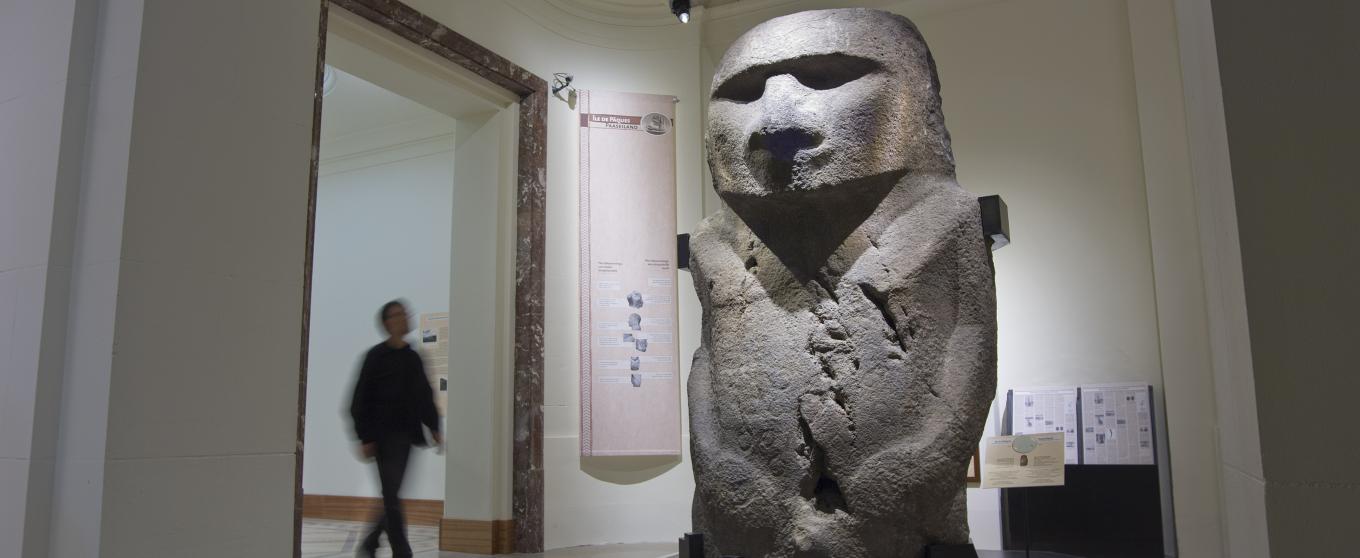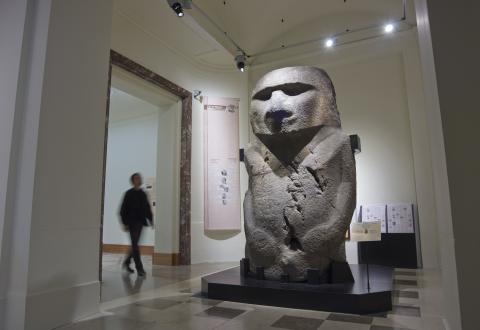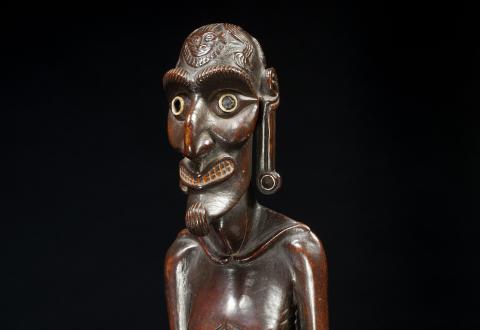
Oceania
The Museum’s full Rapa Nui collection is not on permanent display, but a few masterpieces can be admired: a colossal stone statue (moai), a monumental red stone headdress (pukao) from another figure, and two finely carved wooden sculptures. Together, these exceptional works offer a rare insight into the artistic and cultural heritage of Easter Island.
Caballero BuenoOne of the few moai statue on display outside Rapa Nui (Easter Island)
The Art & History Museum is privileged to house one of the famous colossal stone statues of Rapa Nui (Easter Island). This extraordinary piece was acquired in 1934 during a scientific expedition organized by the Musée de l'Homme in Paris and the Royal Museums of Art and History, represented by the Franco-Swiss ethnologist Alfred Métraux and the Belgian philologist Henri Lavachery.
Their research culminated in the official donation of the statue by Chile, a gesture accepted by the Rapanui people in recognition of the strong human connection forged with the two European researchers. The six...
The Art & History Museum is privileged to house one of the famous colossal stone statues of Rapa Nui (Easter Island). This extraordinary piece was acquired in 1934 during a scientific expedition organized by the Musée de l'Homme in Paris and the Royal Museums of Art and History, represented by the Franco-Swiss ethnologist Alfred Métraux and the Belgian philologist Henri Lavachery.
Their research culminated in the official donation of the statue by Chile, a gesture accepted by the Rapanui people in recognition of the strong human connection forged with the two European researchers. The six-tonne andesite sculpture, probably representing the god of the tuna fishers, was brought to Belgium in 1935 aboard the training ship Mercator. Today, we know this is one of the island’s oldest statues, carved in the 14th century CE. Only two other museums in the world hold complete Rapa Nui statues: the Smithsonian Institution in Washington and the British Museum in London. Meanwhile, around a thousand moai still lie across the island itself.

Masterpieces of woodcarving
Although Rapa Nui is world-renowned for its monumental stone figures, its woodcarving tradition was equally rich. The Museum preserves two exceptional examples: a moai kavakava (a gaunt human figure with visible ribs) and a moai tangata moko (a lizard-man figure). Both are carved in toromiro, a now-rare native tree valued for its remarkable plasticity. The moai kavakava has been carbon-dated to the 15th century CE.

Contact
- Serge Lemaitre: s.lemaitre@kmkg-mrah.be